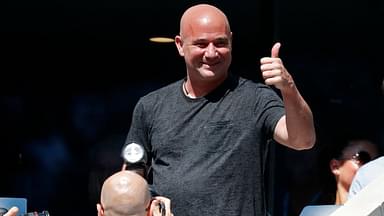Pickleball, while it may divide opinion, continues to be one of the fastest-growing sports globally. Even more so in the United States, where it has now entered the big leagues with many tennis legends campaigning for it. As more players enter the sport at all levels, here are three essential pickleball backhand tips.
1. The preferred grip
Experts, as per the Better Pickleball YouTube channel, recommend the continental grip for the best backhands in pickleball. Newer players, especially ones coming in off tennis, might lean towards using the more classic Eastern/Western forehand grips.
While those tennis-based grips impart more power, especially on the forehand, they may not bear the best results in pickleball backhands. This is because they are more convenient for a fast sport like tennis which is played on bigger courts.
The continental grip, which resembles a handshake, sees the player grip the handle fully with their palm wrapped around the shaft. This means the player need not engage their shoulders or play a two-hand backhand. All power is concentrated in the wrist and hands, making it perfect for the smaller pickleball courts.
2. Ball-watching among the pickleball backhand tips that even tennis players follow
Coaches stress upon the importance of watching the ball in any racket sport. It is imperative for a player to track the projectile for as long as possible before making contact with their racquet/paddle. If they do not do so, they risk not middling the ball and instead hitting it with the frame/edge.
Pickleball players often take their eyes off the ball in the last few seconds before hitting their shot. The small courts and quick nature of the sport mean it is not easy to track the entire ball until it touches the paddle. Hence, one of the pickleball backhand tips by the aforementioned channel is to use the holes on the ball as a reference point. Instead of the entire ball, focus your concentration on the holes till they hit your paddle.
3. Pickleball backhand tips for paddle position
In tennis, players like Roger Federer turn their body so much to hit a backhand that their back often faces the net. This is because the tennis backhand, even more so the Swiss star’s classic one-handed backhand, requires a lot more power since the courts are bigger.
However, with pickleball courts being much smaller, that level of coiling or momentum is not required. In fact, it could be disadvantageous to players. The experts at Better Pickleball recommend making contact during the backhand in front of your body, rather than behind it.
This helps players have more control and accuracy over the shot. Thus, a pickleball participant needs to avoid a high backswing. The sport is quick, hence a high backswing may not leave enough time to swing the paddle ahead and play the shot from the desired position (in front of the body).
Differences between pickleball and tennis not stopping tennis legends
As evident from the above points, there are some fundamental differences between a tennis and pickleball backhand. It is mainly down to the size of the court and the power/force required as a result. With the newer sport being played on smaller courts, shots do not require as much power as tennis.
Smaller courts also facilitate quicker gameplay, since the ball comes back faster. Hence, another key difference is pickleball backhands are compact and quick, unlike elaborate tennis shots.
These differences have not stopped tennis players from acing pickleball. For instance, Sam Querrey is currently a professional pickleball player. Legends like Steffi Graf, Maria Sharapova, John McEnroe, and Andre Agassi featured in the Pickleball Slam. The latter possessed one of the best backhands in tennis during his playing career.
As one of the biggest proponents of increasing pickleball’s coverage, he could use that expertise in this sport to stand out from the rest of the field. If Agassi starts coaching pickleball, he will surely attract many students.








